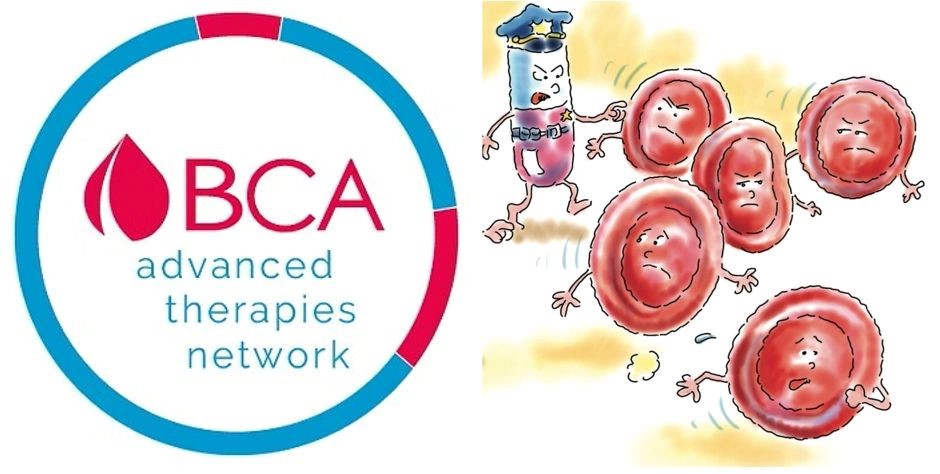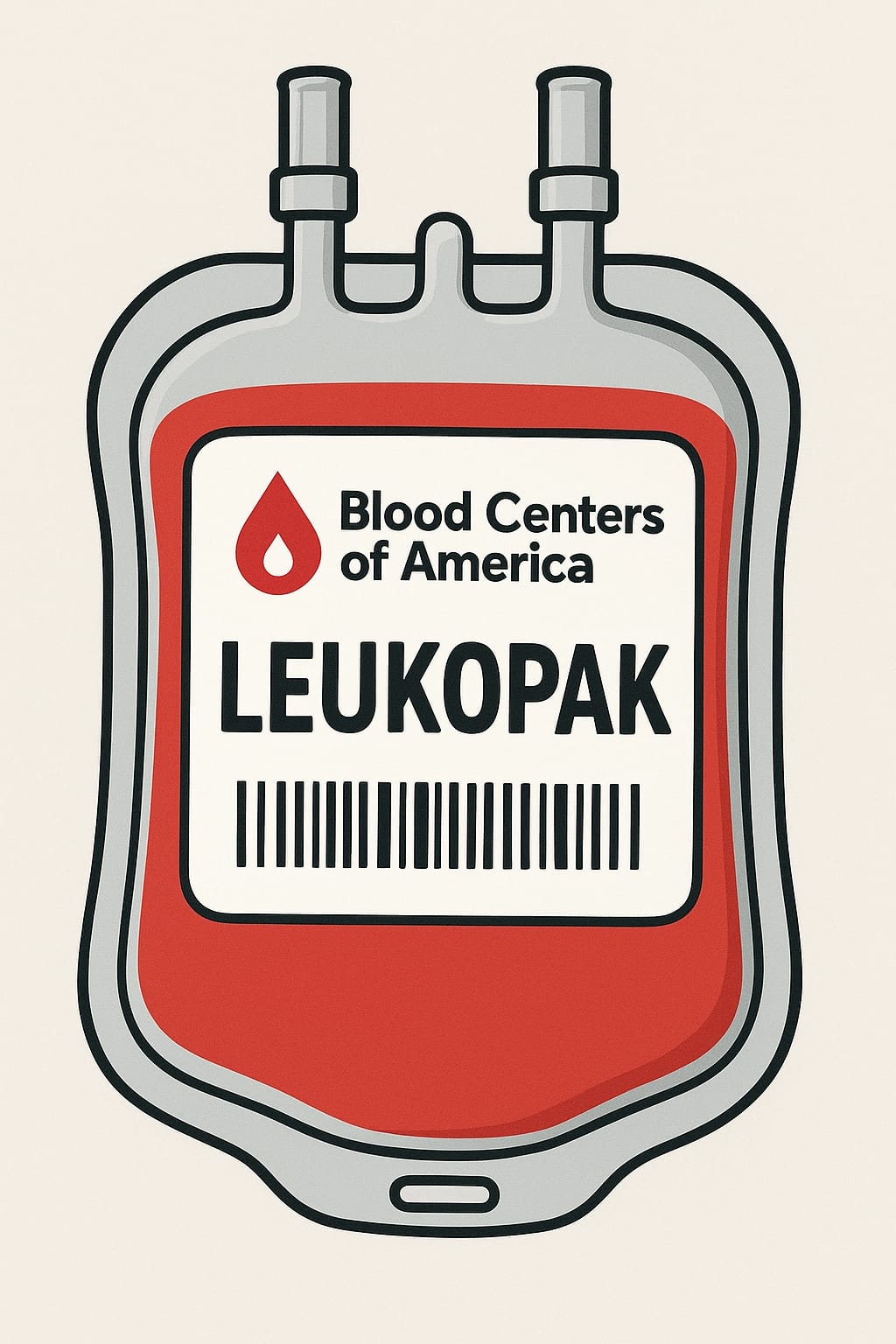This post is sponsored by: Blood Centers of America Advanced Therapies Network
1300 Division Road Suite 102 West Warwick, RI 02893
For inquiries, contact lrssupport@bca.coop
Jennifer Chain, PhD, CABP
September 10, 2025
As scientists conduct cell-based research, one of the most common questions is: “Are my cells viable?” While researchers often assume the cells they purchase or isolate are viable, they may not consider the upstream factors that influence viability, or how viability can be improved before experiments even begin.
Understanding PBMC Sources
Human peripheral blood mononuclear cells (PBMCs) are commonly sourced from leukoreduction system (LRS) chambers and buffy coats. Both are rich in white blood cells, but they differ significantly in their cellular composition and how they are collected and handled. (1) These differences matter because the quality of the input directly affects study success, ranging from basic immunology to advanced cell therapy applications.
LRS chambers are a byproduct of platelet apheresis procedures performed on the Trima Accel collection device. (1-2) During collection, PBMCs are trapped inside the LRS chamber, resulting in an enrichment of lymphocytes and monocytes with reduced granulocyte content (<10%). Buffy coats, in contrast, are generated on demand from freshly collected whole blood by centrifugation, producing a layer concentrated with leukocytes, including 40-80% granulocytes, along with some red blood cells (RBCs) and platelets. (1)
Viability Trends Over Time
Although both LRS chambers and buffy coats are valuable sources of PBMCs, they exhibit markedly different viability profiles. (1) In a head-to-head comparison, PBMCs from LRS chambers where shown to maintain consistently high viability over a five-day period post-collection. In contrast, PBMCs from buffy coats showed slightly reduced viability as soon as 1 day after collection, and a sharp decline beginning on Day 2. By Day 5, cells from buffy coats averaged less than 85% viability, while those from LRS chambers remained above 95%.
Red Blood Cell Contamination
One major factor influencing PBMC viability is the presence of RBCs. When RBCs lyse, they release free hemoglobin and oxidative byproducts that can damage surrounding immune cells. (3-4) The presence of RBCs also complicates separation methods such as density gradient centrifugation, leading to reduced PBMC recovery and lower post-isolation viability. Strategies such as using RBC lysis buffers or optimizing centrifugation steps can help mitigate these effects and improve overall cell survival.
Granulocyte Burden and Its Effects
The presence of granulocytes is another prominent factor affecting PBMC viability. (5) Neutrophils, the most abundant subset of granulocytes, are prominent within buffy coats but are largely excluded from LRS chambers due to the principles of platelet apheresis. (1-2). This distinction is important because granulocytes are short-lived and prone to rapid apoptosis, releasing reactive oxygen species that can damage neighboring cells. (6-7) Their presence accelerates loss of cellular viability in buffy coat preparations, especially when transport and processing are delayed. The reduced granulocyte burden in LRS chambers helps preserve PBMC viability during storage and handling. (1)
Centrifugation Stress
Centrifugation plays a dual role in PBMC isolation—it is essential for separation but can also be damaging. Buffy coat preparation involves a single, high-speed spin that compacts leukocytes into a dense interface with RBCs and platelets. (8) This exposes cells to abrupt g-forces and shear stress, which can compromise membrane integrity and reduce viability. The longer processing is delayed, the more pronounced these effects become.
In contrast, LRS chambers benefit from a gentler approach. The Trima Accel system uses continuous-flow centrifugation, separating cells and platelets in real time under distributed forces. (9) Leukocytes are concentrated through hydrodynamic flow paths rather than being compacted into dense pellets. This controlled process helps preserve PBMC viability during collection. However, even in LRS processing, repeated washes can negatively impact cell survival. Achieving the right balance between purity and gentle handling is key to maintaining cell health.
Storage and Handling Conditions
Storage, handling, and transport also play critical roles in PBMC survival. First, temperature fluctuations can complicate viability. Refrigeration slows metabolic activity but can stress certain leukocyte subsets, while room temperature storage accelerates apoptosis. (4,10-11)
Agitation and shear stress during transport also contribute to declining viability. Prepared buffy coats are transported inside flexible blood bags, providing ample space for cells in 40-60 mL of plasma and anticoagulant to move around during handling and transit. This also subjects the cells to significant sheer stress. However, the cells inside collected LRS chambers are suspended in 8–10 mL of plasma and anticoagulant, which nearly fills the small, cone-shaped rigid plastic chamber. That limited space and rigid structure reduce cellular movement during transport, thereby minimizing mechanical agitation and likely preserving viability. (1)
Donor-Dependent Variables
Even when technical variables are tightly controlled, donor biology can influence outcomes. Differences in leukocyte counts, RBC fragility, and platelet reactivity mean that some donors’ cells are inherently more resilient than others. Age, health status, and medications all shape the quality of the collected cells. (11-14) For instance, frequent platelet donors, the source of LRS chambers, may exhibit subtle shifts in immune cell populations compared to whole blood donors. (15) Platelet donors can donate up to 24 times per year, while whole blood donors are limited to six donations annually and therefore lose fewer leukocytes through donation than platelet donors. Biological variables between donors are not controllable, but it is important to be aware of them when planning experiments and comparing results across studies.
Conclusion: Viability Is Affected by Many Variables
Maintaining PBMC viability is as much about prevention as it is about intervention. Minimizing the presence of RBCs, optimizing centrifugation protocols, and reducing delays in processing all contribute to higher-quality cell recovery. Gentle handling and appropriate storage conditions should be prioritized to preserve the functional potential of collected cells.
While both buffy coats and LRS chambers provide access to PBMCs, their differences can impact cellular viability distinctly. Buffy coats are created under high centrifugal force and contain elevated levels of granulocytes. (1) They also experience more agitation during handling and transport, which introduces shear stress that can lead to RBC lysis and trigger granulocyte death. These factors compromise PBMC viability, with the impact becoming more pronounced as processing delays increase.
In contrast, PBMCs within LRS chambers are collected using continuous-flow centrifugation, which applies gentler forces. (9) LRS chambers contain fewer granulocytes (1) and experience less agitation during handling and transport. These conditions appear to preserve cell viability more effectively. Although LRS chambers contain more RBCs than buffy coats, this does not seem to significantly compromise viability, possibly due to the reduced shear stress experienced during collection and transport. These features make LRS chambers particularly attractive for applications where cell viability is critical.
Ultimately, the viability of collected cells is not predetermined; it is shaped by a chain of interconnected variables: the composition of the blood product, the stresses introduced during processing, the conditions of storage and transport, and the biology of the donor. Standardizing practices around these factors are essential to ensuring consistent, high-quality inputs. Since cell viability directly impacts the outcome of downstream experiments, attention to these details is not optional, it is essential.
References
2. How LRS Chambers Enrich PBMCs During Platelet Collection
6. The role of neutrophil death in chronic inflammation and cancer
8. Buffy Coat Processing Impacts on Monocytes’ Capacity to Present Lipid Antigens – PMC
9. Trima Accel
10. Effects of storage conditions of human whole blood on the viability of lymphocytes – PubMed
11. Effects of processing conditions on stability of immune analytes in human blood – PMC
12. How donor age affects RBC deformability in storage | Blood Advances | American Society of Hematology



